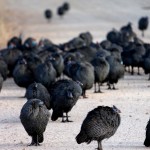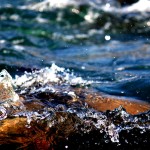This is my first time designing for a startup, but I really believe in their mission. This logo and business card was for Ferro Technologies, their website is at http://ferro.watch. Their product is a watch which can be used instead of credit cards with credit card readers. Inductive coils produce the electromagnetic signature, allowing the user to pay at any… Read more →
Author: Pi
Fick’s Laws of Diffusion
I’ve realized that Fick’s Laws for diffusion are very important for a lot of different fields, but aren’t very easily searchable. Below is a short compilation of my *favorite* problems and their solutions. Just for fun! Steady State Diffusion through the Walls of a Cylindrical Pipe (From Jeff Hoyt’s MSE 103 Course at UC Berkeley) Consider hydrogen diffusing through an… Read more →
Material Etching and Etch Rates
Here’s a partial list of materials and their etch rates! Isotropic Etch Mode Rate (Å/Min) Selectivity (:1) Anisotropic Etch Mode Rate (Å/Min) Selectivity (:1) Silicon Nitrate (Si3N4) SF6/O2 RIE/PE >1000 2-3, Resist CHF2/O2 DRIE 400+ 2-3, Resist >7, SiO2 >10, GaAs >20, GaAs, Al >10, Ti, W, Al 1, Si Silicon Dioxide (SiO2) BHF 100 CHF2/O2 DRIE 300-400 2-3,… Read more →
Introduction to Soft Lithography
This is the second part to my first post about Hard Lithography (Wafer Fabrication). I’m going to just briefly cover soft lithography techniques. Polymer Materials vs. Glass for BioMEMs Glass has well known surface and electro-osmotic properties for microfluidic applications. Polymers also have some similar properties, such as optical transparency and biocompatibility, but also have a few advantages and disadvantages.… Read more →
“Smart” Polymers and their Stimuli
Smart Polymers are polymers that respond to characteristics of their environment such as pH, temperature, calcium, magnesium, organic solvents, magnetic field, electrical potential, IR radiation and UV radiation. Polymer responses can include altering color or transparency, becoming conductive or permeable to water or changing shape (shape memory polymers). Below is a table I made of common polymers and their stimuli, based… Read more →
Hog Redesign
When I was taking CS 61a at UC Berkeley (Python, Scheme, and SQL) I had to do a project called Hog. The game of Hog has a few interesting rules (which I detailed below in a handy PDF) but notably the GUI we were provided was much too ugly to go un-redesigned. Here’s my redesigned GUI, with the “before” below.… Read more →
An Introduction to Wafer Processing
Here’s a brief introduction to Silicon Wafer Processing I wrote (based on Chapter 2 of Fundamentals of BioMEMS and Medical Microdevices by Steven S. Saliterman). Silicon dioxide Film Growth on Silicon Wafers Silicon dioxide film can be produced through thermal oxidation. This can include dry, wet or pyrogenic oxidation. Dry oxidation uses rapid thermal annealing to react pure silicon with oxygen gas… Read more →
Pi Finds Food
One of my best friends, Zach, and I really like cooking adventures but always spend the majority of the time sifting through bookmarked food links. I realized it’d be a lot faster to pick if we could see pictures of the food, so I made a tumblr to organize all the recipes. Search for categories using the tags at… Read more →
The Future of Medicine is Found not Invented
I’ve realized I’m incredibly passionate about injecting the beautiful, vibrant startup industry into Medicine on a fundamental level. Technology in the Medical Industry tends to be an sluggish 5 year turn around for approved projects. The majority of the startup industry strives to work a little bit faster, with year long turn around. My philosophy is to attempt to mimic this… Read more →
South Africa
These are a small subset of the images I took while I visited Africa in 2010.
Feel free to use them, but please credit me! I can also send you higher resolution images if you message me.
- Simon’s Town Penguins
- Kruger Park
- Knysna
- Kruger National Park
- Kruger National Park
- Simon’s Town
- Kruger National Park
- Simon’s Town
- Simon’s Town
- Cape Point
- Kruger National Park
- Simon’s Town
- Kruger National Park
- Kruger National Park
- Cape Point
- Seal Island


























You must be logged in to post a comment.